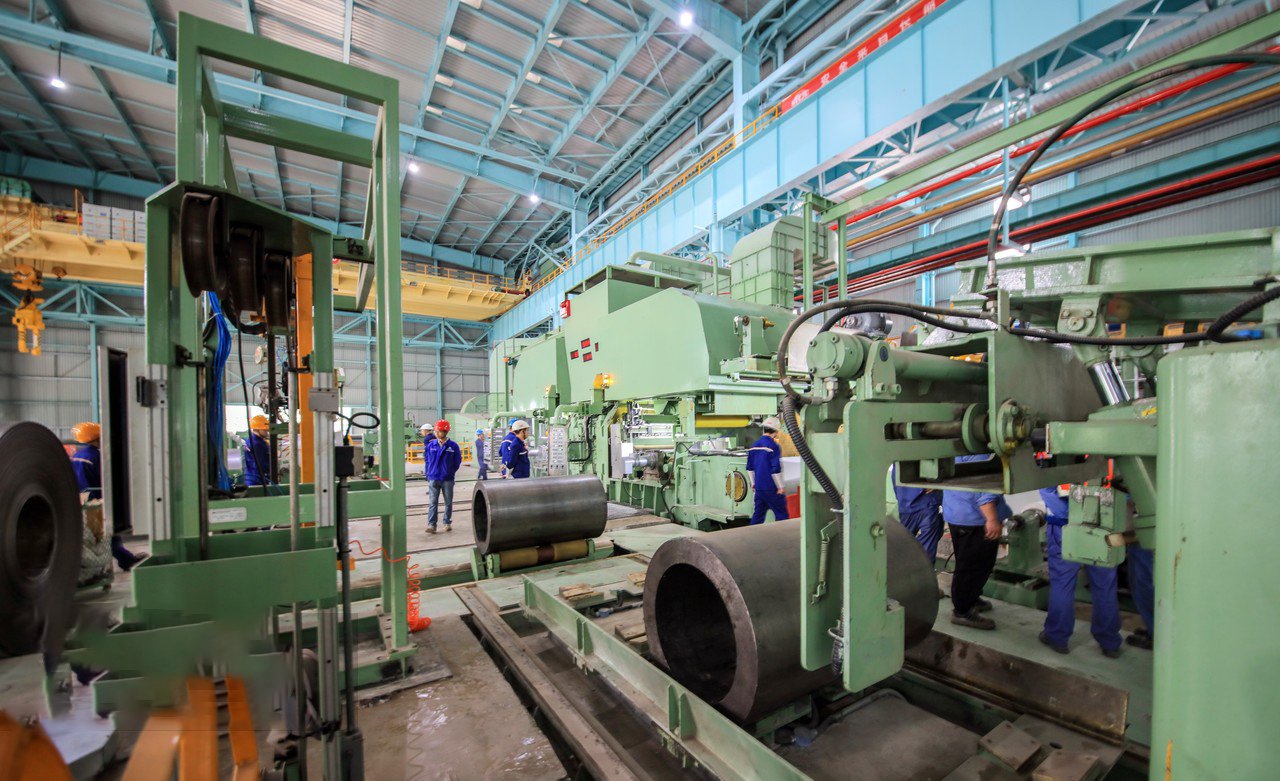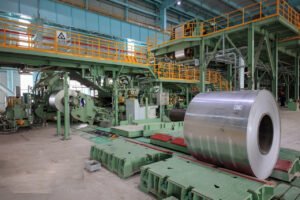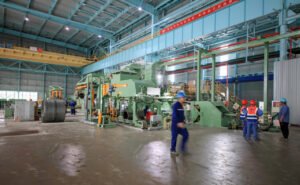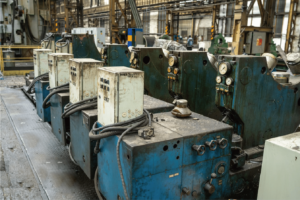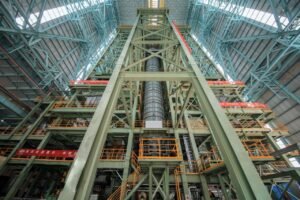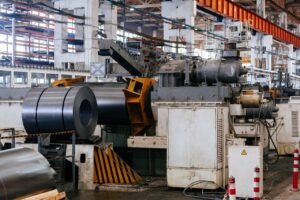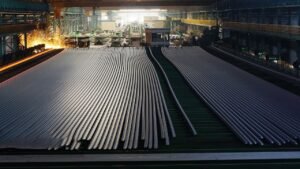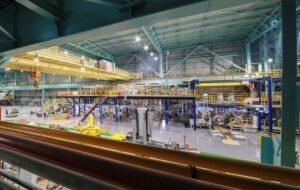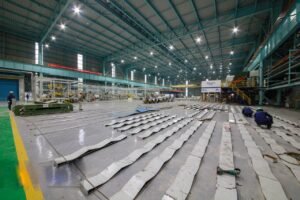Stainless Steel vs Aluminum: A Comprehensive Guide to Strength, Weight, and ROI
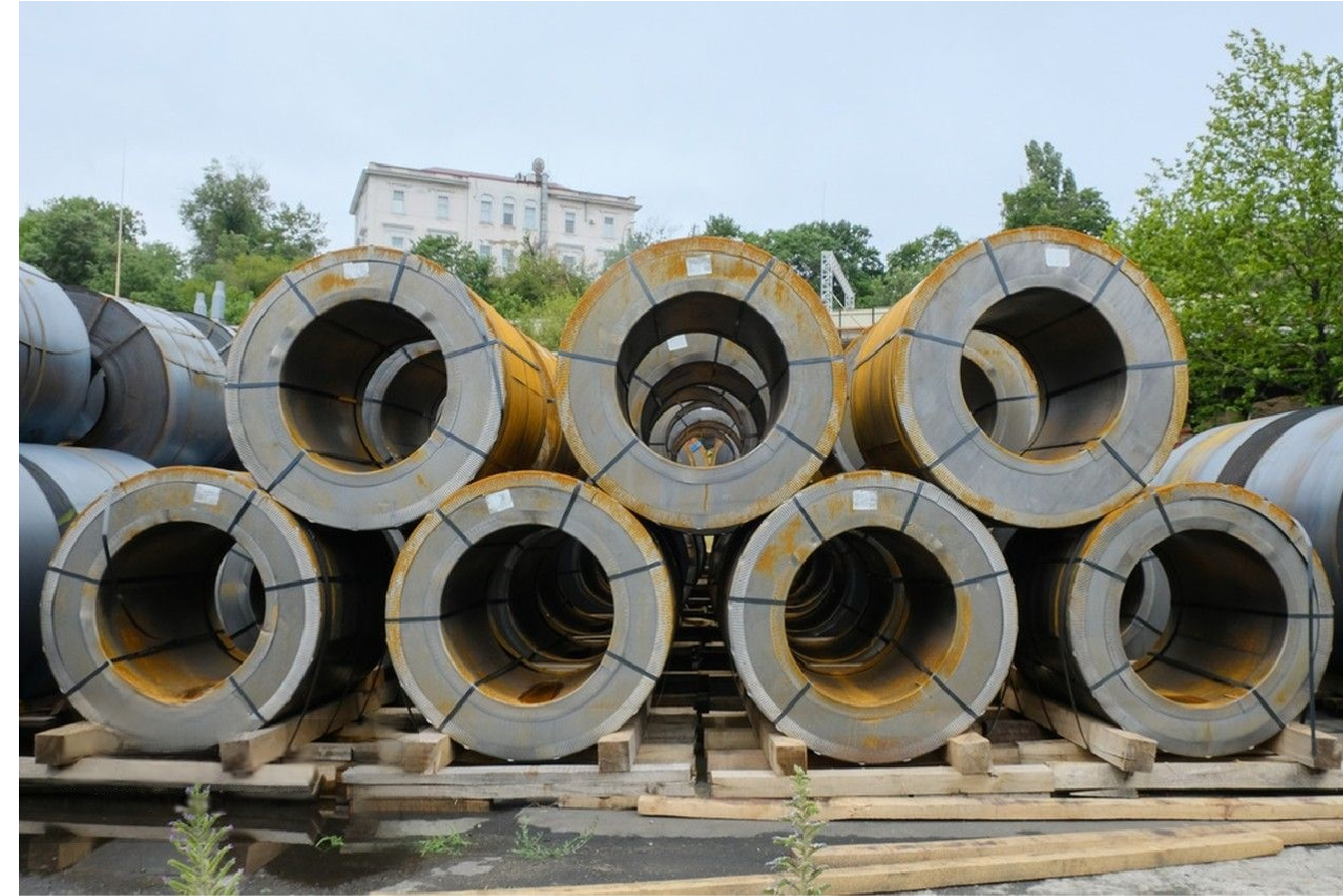
Are you struggling to choose the right metal for your project? The decision between stainless steel and aluminum can be daunting, with a mistake potentially costing you in performance and budget. I'm here to help you navigate this choice, ensuring you select the material that delivers optimal results.
This article provides a comprehensive comparison of stainless steel and aluminum, focusing on their core differences in strength, weight, corrosion resistance, and overall return on investment. We will explore the fundamental properties of each metal to help you make an informed decision for your specific application.
In my years as Global Business Director at MFY, I’ve seen countless clients grapple with this exact problem. The choice isn't merely about picking a material; it's about defining the future of your project's durability, efficiency, and long-term value. This guide will walk you through the critical factors, moving beyond simple surface-level comparisons to give you the insights needed to invest wisely.
Choosing between stainless steel and aluminum requires a nuanced understanding that goes beyond their initial appearance. It involves a critical analysis of their inherent properties weighed against the specific demands of your application. For instance, while aluminum’s lightweight nature is a clear advantage in aerospace, it cannot match the raw strength and high-temperature tolerance of stainless steel required in heavy industrial equipment or structural components. In this guide, I'll leverage data from industry reports and share real-world case studies from our clients at MFY to illustrate how these trade-offs play out in practice, empowering you to calculate the true return on investment for your project.
What are the fundamental differences between stainless steel and aluminum?
Are you confused by the technical jargon surrounding metal alloys? It's easy to see stainless steel and aluminum as just two silvery metals, but this oversimplification can lead to material choices that compromise your project's integrity and budget. Let’s clarify the basics to build a strong foundation.
The fundamental difference lies in their composition and primary properties. Stainless steel is an iron-based alloy containing at least 10.5% chromium, which gives it its signature corrosion resistance. In contrast, aluminum is a lightweight, non-ferrous pure metal known for its low density and excellent conductivity.
At MFY, we believe an informed client is our best partner. Understanding these foundational differences is the first step toward building an efficient and resilient supply chain. It’s not just about what the material is, but what it does. The chromium in stainless steel doesn’t just prevent rust; it creates a passive, self-repairing layer that offers long-term protection in harsh environments. Aluminum’s natural oxide layer also protects it, but it’s a different mechanism with different limitations. For one of our clients in the food processing industry in Southeast Asia, this distinction was critical. They required a material for their conveyor systems that could withstand daily chemical washes and high humidity without degrading or leaching into the products. While aluminum was considered for its cost, the robust, non-reactive nature of 304 stainless steel made it the only viable choice for ensuring food safety and equipment longevity. This initial choice, based on a clear understanding of material composition, saved them from potential regulatory fines and costly equipment replacement down the line. We will delve deeper into how these elemental differences translate into tangible performance metrics like strength, weight, and ultimately, your return on investment.
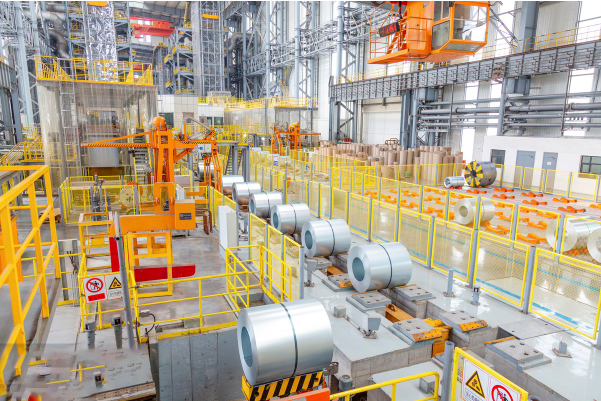
The decision between stainless steel and aluminum is one of the most common material selection crossroads in modern engineering and manufacturing. It extends far beyond a simple aesthetic preference; it is a strategic choice rooted in the fundamental science of metallurgy. To make a truly informed decision, one must look at the atomic level and understand how the composition of each metal dictates its performance in the real world. Stainless steel, as an alloy, is inherently complex. Its base is iron, a metal known for its strength but also its susceptibility to rust. The genius of stainless steel lies in the addition of chromium. When exposed to oxygen, the chromium forms a thin, invisible, and incredibly durable passive layer of chromium oxide on the surface. This layer is what makes the steel "stainless." If scratched, it instantly reforms, providing continuous protection. Other elements like nickel and molybdenum can be added to enhance specific properties, such as formability or resistance to specific corrosives like chlorides, creating a wide spectrum of grades for different applications. Aluminum, on the other hand, is a pure element. It is naturally light and also forms a protective oxide layer. However, this aluminum oxide layer, while effective in neutral pH environments, is not as resilient as the chromium oxide layer of stainless steel against strong acids or alkaline solutions. This chemical distinction is a critical starting point for any analysis.
Understanding Alloy Composition and its Impact
The composition of stainless steel is its greatest strength. As a multi-component alloy, it can be precisely engineered for specific tasks. For instance, at MFY, we supply Grade 304 stainless steel for general-purpose applications like kitchen sinks and architectural paneling due to its excellent balance of cost, corrosion resistance, and formability. However, for a client in the marine construction sector in the Middle East, we would exclusively recommend Grade 316. This grade contains molybdenum, which provides superior resistance to the chloride-rich environment of seawater, preventing pitting and crevice corrosion that would quickly degrade lesser materials.
Aluminum’s strength also comes from alloying, but with a different purpose. Pure aluminum is relatively soft. It is alloyed with elements like copper, magnesium, and silicon to create series like the 6061 or 7075 alloys, which significantly increase its strength while retaining its low density. A manufacturer of high-performance bicycle frames, for example, would choose a 6061 aluminum alloy for its high strength-to-weight ratio, which is paramount for performance. However, they would not use this same material to construct a chemical storage tank, where the superior corrosion resistance of stainless steel is non-negotiable.
The story isn’t just about chemistry but also about physical properties. The iron base in stainless steel gives it a much higher density (around 7.8-8.0 g/cm³) compared to aluminum (around 2.7 g/cm³). This means for the same volume, stainless steel is nearly three times heavier. This has massive implications for logistics, structural design, and installation costs, which we will explore later. Furthermore, the melting point of stainless steel is significantly higher (around 1400-1450°C) than aluminum's (around 660°C), making steel the undisputed choice for high-temperature applications like exhaust systems, furnaces, and industrial pressure vessels.
Corrosion Resistance Mechanism: A Deeper Look
The "stainless" quality of steel and the natural resistance of aluminum both stem from a process called passivation, but the resulting protective layers are not created equal. Stainless steel’s passive layer1 is a chromium-oxide film that is remarkably stable and non-reactive across a wide pH range. It is also self-healing; when the surface is scratched or damaged, the exposed chromium immediately reacts with oxygen in the air to reform the protective barrier. This dynamic self-repair mechanism is what gives stainless steel its legendary durability in aggressive environments.
Aluminum also forms a passive oxide layer (aluminum oxide) very quickly. This layer provides excellent corrosion protection in environments with a pH range between 4.5 and 8.5. Outside of this range, in highly acidic or alkaline conditions, the layer can break down, leading to rapid corrosion. This is a critical limitation. For example, a typical client of ours in the chemical processing industry cannot use aluminum for tanks or piping that will come into contact with strong cleaning agents or caustic chemicals, as the material would be compromised.
Moreover, the type of corrosion each metal is susceptible to differs. Aluminum can be prone to galvanic corrosion when in contact with more noble metals (like steel) in the presence of an electrolyte. Stainless steel, particularly lower grades, can be susceptible to pitting and crevice corrosion in chloride-rich environments, which is why we guide our marine and coastal clients towards molybdenum-bearing grades like 316 and 317L. Understanding not just that a material resists corrosion, but how и under what conditions, is central to responsible material specification.
A Comparative Overview of Key Properties
To provide a clear, at-a-glance comparison, it’s helpful to quantify these fundamental differences. The data underscores the distinct roles these two metals play in the industrial landscape. While charts and numbers tell part of the story, my experience has shown that the true test is application. We once worked with a construction contractor who was hesitant about the upfront cost of stainless steel for a public infrastructure project. They were leaning towards aluminum to meet their budget.
However, after we presented a life-cycle cost analysis, factoring in aluminum's lower durability against urban pollution and higher potential for damage requiring replacement, the choice became clear. The specified 316L stainless steel, while more expensive initially, would offer a service life three to four times longer with minimal maintenance. This shift in perspective from initial cost to long-term value is a journey we guide many of our clients on. The table below summarizes the key differentiators that informed their decision.
| Недвижимость | Stainless Steel (304 Grade) | Aluminum (6061 Alloy) | Implication for Selection |
|---|---|---|---|
| Primary Composition | Iron, Chromium (18%), Nickel (8%) | Aluminum (97.9%), Magnesium, Silicon | Dictates core characteristics like strength, weight, and corrosion mechanism. |
| Density | ~8.0 g/cm³ | ~2.7 g/cm³ | Aluminum is ~1/3 the weight, critical for aerospace, automotive, and manual handling. |
| Прочность на разрыв | ~515 MPa | ~310 MPa | Stainless steel is inherently stronger and can handle higher loads and stresses. |
| Температура плавления | ~1450°C | ~660°C | Stainless steel is essential for high-temperature applications. |
| Устойчивость к коррозии | Excellent, especially with molybdenum | Good in neutral pH, but vulnerable to acids/alkalis | Stainless steel is more versatile for chemical and coastal environments. |
Stainless steel contains chromiumПравда
Stainless steel must contain at least 10.5% chromium to form its protective oxide layer.
Aluminum is heavier than steelЛожь
Aluminum has about 1/3 the density of stainless steel, making it significantly lighter.
How do strength and durability compare between stainless steel and aluminum?
Worried about your equipment or structures failing under pressure? Choosing a material without fully understanding its strength and long-term durability can lead to catastrophic and costly failures. You need a material you can trust to withstand the demands of its environment, day in and day out.
In general, stainless steel is significantly stronger, harder, and more durable than aluminum. It exhibits superior resistance to impact, pressure, and high temperatures. While certain aluminum alloys possess a high strength-to-weight ratio, they do not match the absolute strength and fatigue resistance of most stainless steel grades.
This isn't just a textbook fact; it's a reality I see played out in high-stakes industries every day. Strength isn't a single metric—it's a combination of tensile strength (resisting being pulled apart), yield strength (resisting deformation), and hardness (resisting scratches and dents). For a manufacturing client producing heavy-duty food processing equipment, these properties were paramount. Their machines needed to endure intense vibration, daily sanitation with harsh chemicals, and the occasional impact from tools or carts. They initially prototyped a component using a high-strength aluminum alloy to save on weight and cost. However, field testing revealed premature wear and microscopic stress fractures within months. The constant vibration led to fatigue failure, a risk they couldn't afford in a food-safe environment. We worked with them to transition the component to a 304L stainless steel sheet2. The result was a dramatic increase in the equipment's service life and reliability, reinforcing the principle that for applications where durability is non-negotiable, the inherent strength of steel provides unmatched peace of mind and long-term performance.
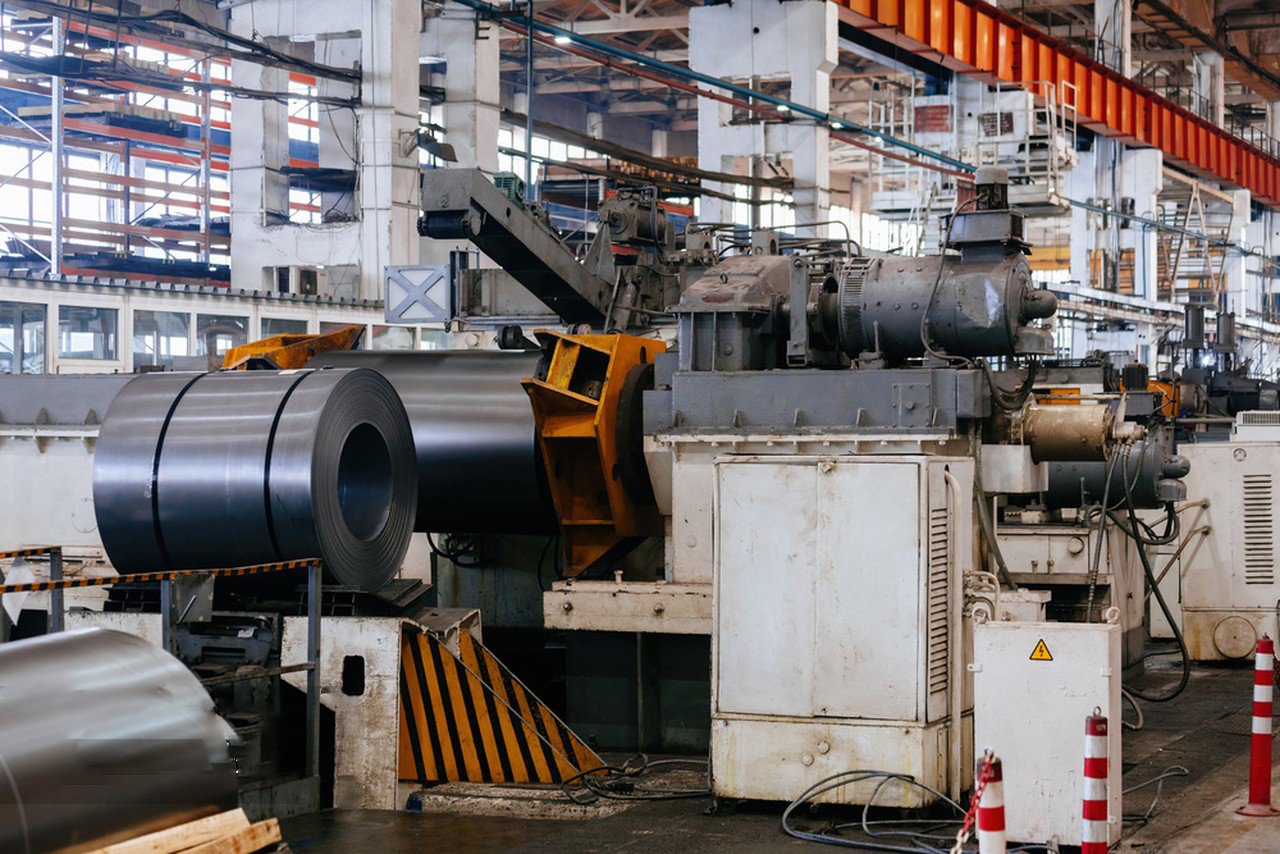
When our clients at MFY ask about strength, my first question is always, "What kind of strength do you need?" The term is broad, encompassing everything from a material's ability to resist a single, massive force to its capacity to endure millions of small, repetitive cycles. The comparison between stainless steel and aluminum on this front is a classic engineering trade-off between absolute power and lightweight efficiency. Stainless steel's strength is rooted in its iron and carbon backbone, fortified by chromium. This composition gives it a high modulus of elasticity, meaning it resists deformation under load. It can absorb more energy before it fails and is far less likely to dent or scratch in a rugged industrial environment. Aluminum, while impressively strong for its weight, is inherently more malleable and has about one-third the stiffness of steel. This means that for a component of the same dimensions, an aluminum part will deflect three times more than a steel part under the same load. To achieve the same rigidity as a steel component, an aluminum component must be designed with a larger cross-section or more complex geometry, which can sometimes offset its initial weight advantage. Understanding this interplay between raw strength, stiffness, and design is crucial for proper material selection.
Tensile and Yield Strength: The Core of Performance
Tensile strength is the maximum stress a material can withstand while being stretched or pulled before breaking. Yield strength is the point at which it begins to deform permanently. For most applications, yield strength is the more critical metric, as permanent deformation usually signifies component failure. Here, stainless steel holds a decisive advantage. For example, a common grade like 304 stainless steel3 has a typical yield strength of around 215 MPa and a tensile strength of 515 MPa. In contrast, a widely used 6061-T6 aluminum alloy has a higher yield strength of about 276 MPa but a lower tensile strength of 310 MPa.
While the 6061 alloy appears competitive on yield strength, other steel grades far surpass it. Duplex stainless steels, which we supply for demanding applications like chemical processing and offshore platforms, can have yield strengths exceeding 550 MPa, more than double that of common aluminum alloys. This superior strength means that for high-pressure vessels, structural beams, or load-bearing supports, stainless steel can handle the required forces with a smaller and simpler component design. I recall a project with an engineering contractor building a pedestrian bridge in a busy urban center. The initial design used aluminum to minimize weight and ease installation. However, calculations showed that to meet safety standards for load and wind resistance, the aluminum beams would need to be so large and thick that they became architecturally and logistically impractical. By switching to high-strength duplex stainless steel, they achieved the required performance with sleeker, more elegant profiles, demonstrating how absolute strength can enable superior design outcomes.
Durability, Hardness, and Fatigue Resistance
Durability is a measure of a material's lifespan under expected operational stresses, including wear, abrasion, and fatigue. This is where stainless steel truly distances itself from aluminum. On the Rockwell or Brinell hardness scales, stainless steels are significantly harder than aluminum alloys. This translates directly to superior scratch and dent resistance. A stainless steel work surface in a commercial kitchen will endure decades of contact with knives, pots, and abrasive cleaners, while an aluminum surface would quickly become scarred and damaged.
Fatigue resistance—the ability to withstand repeated cycles of loading and unloading—is another critical factor where steel excels. The iron-based crystal structure of steel gives it a well-defined fatigue limit, a stress level below which it can endure a virtually infinite number of cycles without failing. Aluminum does not have a true fatigue limit; any repetitive stress, no matter how small, will eventually cause it to fail. This makes stainless steel the only reliable choice for components subjected to constant vibration or cyclical loading, such as rotating shafts, springs, and pressure-cycling systems. For a client in the automotive sector, we supply stainless steel for exhaust system components precisely for this reason. The combination of high temperatures, constant vibration, and corrosive gases would cause an aluminum part to fail very quickly, while stainless steel provides the required durability for the vehicle's entire lifecycle.
Performance Under Extreme Temperatures
A material's strength is not constant; it changes with temperature. This is another area where the two metals diverge dramatically. Stainless steel maintains its strength exceptionally well at both high and cryogenic temperatures. Austenitic grades like 304 и 3164 are workhorses in high-temperature environments like furnaces, heat exchangers, and engine components, retaining significant strength at temperatures where aluminum would have already melted (melting point ~660°C).
Conversely, at cryogenic temperatures, austenitic stainless steels actually become stronger and tougher, making them ideal for handling and storing liquefied natural gas (LNG) and other super-cooled liquids. We have supplied Grade 304L stainless steel pipes to clients in the energy sector for this very purpose, as it remains ductile and fracture-resistant at temperatures as low as -196°C. Aluminum alloys, in contrast, can become brittle at very low temperatures, increasing the risk of fracture. This performance differential at the extremes of the temperature scale is a critical consideration for any application operating outside of normal ambient conditions. The table below provides a comparative analysis of these strength-related metrics.
| Метрика производительности | Stainless Steel (Austenitic 304) | Aluminum (6061-T6 Alloy) | Winner for Demanding Applications |
|---|---|---|---|
| Предел текучести | ~215 MPa (higher in other grades) | ~276 MPa | Stainless Steel (especially duplex/high-strength grades) |
| Hardness (Brinell) | ~123 | ~95 | Stainless Steel |
| Fatigue Limit | Yes (can endure infinite cycles below limit) | No (any cyclic stress causes cumulative damage) | Stainless Steel |
| High-Temp Strength | Excellent (maintains strength up to ~870°C) | Poor (significant strength loss above 150°C) | Stainless Steel |
| Low-Temp Toughness | Excellent (becomes stronger and tougher) | Good, but can become brittle | Stainless Steel |
Stainless steel is stronger than aluminumПравда
Stainless steel has higher tensile and yield strength compared to aluminum alloys, making it more resistant to deformation and breakage under load.
Aluminum has better fatigue resistanceЛожь
Stainless steel has a true fatigue limit, while aluminum can fail under any repetitive stress given enough cycles.
What are the weight differences and their implications for usage?
Is the physical weight of your material bogging down your design and inflating your budget? The mass of a component impacts everything from shipping and installation costs to the overall performance and efficiency of the final product. Choosing incorrectly can lead to an over-engineered, inefficient, and costly outcome.
Aluminum is approximately one-third the weight of stainless steel. With a density of around 2.7 g/cm³ versus steel's ~8.0 g/cm³, this substantial difference makes aluminum the go-to choice for industries where minimizing weight is the top priority, such as aerospace, automotive, and portable equipment.
This weight advantage is aluminum's single most celebrated attribute. However, as I often advise my clients at MFY, weight must be considered in the context of strength. The "strength-to-weight ratio" is a more telling metric. While aluminum is lighter, you may need more of it to achieve the same strength as a steel component, which can sometimes diminish the weight savings. For a client manufacturing high-speed rail carriages, this was a central challenge. They needed to reduce carriage weight to improve energy efficiency and speed, making aluminum an attractive option for body panels. Yet, for the underframe and bogie structures, which bear immense structural loads and impact forces, only the absolute strength and fatigue resistance of stainless steel would suffice. This hybrid approach, using each material where its primary attribute shines, is often the most intelligent engineering solution, balancing performance, safety, and efficiency.

The stark difference in density between stainless steel and aluminum is a fundamental physical property that creates a ripple effect through the entire lifecycle of a product or project. At its core, the choice is often framed as a battle between steel's brute strength and aluminum's lightweight agility. Aluminum's density of roughly 2.7 grams per cubic centimeter5 is a game-changer in any application that moves. In transportation—be it a car, a train, or an airplane—every kilogram of weight saved translates directly into lower fuel consumption and reduced emissions over the vehicle's operational life. This is why aluminum alloys form the backbone of the modern aerospace industry and are seeing increasing adoption in automotive body panels and structural components. However, this conversation is incomplete without discussing the implications of this weight difference in static applications. For large architectural projects or heavy machinery, the reduced weight of aluminum can significantly lower logistical costs, simplify handling on-site, and potentially reduce the foundational support required, offering tangible cost savings that go beyond the per-kilogram price of the metal itself.
Strength-to-Weight Ratio: A More Nuanced Comparison
While stainless steel is stronger in absolute terms, the concept of strength-to-weight ratio (a material's strength divided by its density) provides a fairer platform for comparison, particularly for mobile applications. High-strength aluminum alloys, like those in the 7000 series, boast exceptional strength-to-weight ratios, sometimes even rivaling those of certain steel grades. This makes them indispensable for applications like aircraft fuselages and high-performance racing bicycle frames, where every gram is counted, and the forces, while significant, are well-defined and can be designed for.
However, it is crucial to understand the limitations of this metric. A high strength-to-weight ratio does not compensate for lower hardness, fatigue resistance, or temperature tolerance. As I mentioned in my client story about the heavy-duty food processing equipment, the aluminum component failed not because its strength-to-weight ratio was poor, but because it couldn't withstand the real-world operational stresses of vibration and impact. In static, high-load applications like building structures or industrial platforms, absolute strength and stiffness are often more important than the strength-to-weight ratio. A stainless steel I-beam will support a much heavier load than an aluminum I-beam of the same dimensions, and designing an aluminum beam to match the steel's performance would require a much larger, bulkier profile, negating much of the weight advantage.
Implications for Logistics, Handling, and Installation
The logistical benefits of a lighter material are undeniable. When we at MFY ship an order of stainless steel coils, the weight dictates the shipping container capacity, the type of truck required for transport, and the crane capacity needed for loading and unloading. A shipment of aluminum of the same volume would be nearly three times lighter, potentially leading to lower freight costs.
This advantage extends to the construction or factory floor. I worked with a construction contractor on a project involving the installation of large façade panels on a high-rise building. They chose aluminum panels primarily because they could be maneuvered and installed by a smaller crew with lighter lifting equipment compared to the stainless steel alternatives. This decision accelerated their installation timeline and reduced on-site labor costs. However, this must be balanced against the material's lower durability. The aluminum panels are more susceptible to denting during installation and damage from hail or debris over their lifetime. For a landmark project demanding a 50+ year lifespan with minimal maintenance, a heavier, more robust stainless steel panel often proves to be the more prudent long-term investment, despite higher initial installation costs.
Design Flexibility and Manufacturing Considerations
Weight also influences design and manufacturing processes. Aluminum's lower weight and greater malleability make it easier to extrude into complex, intricate shapes. This is a significant advantage for creating custom profiles for window frames, heat sinks, and decorative trim. Its lower melting point also means it requires less energy to be cast into specific forms.
Stainless steel, being harder and tougher, requires more powerful machinery and energy to be formed, machined, and welded. However, its superior strength allows for designs that use less material. For example, a support bracket made from stainless steel can be much thinner and more streamlined than its aluminum equivalent while providing the same or greater level of support. This can lead to more elegant and less obtrusive designs, a key consideration in architectural and consumer product applications. Our team at MFY often collaborates with designers who select our polished or brushed stainless steel sheets not just for their corrosion resistance, but for their ability to achieve a high-end look with minimalist, slender forms that would not be possible with a weaker material.
| Аспект | Stainless Steel | Aluminum | Key Implication |
|---|---|---|---|
| Density | High (~8.0 g/cm³) | Low (~2.7 g/cm³) | Aluminum is ideal for weight-sensitive applications (transportation, aerospace). |
| Strength-to-Weight | Good to Excellent | Very Good to Exceptional | Aluminum excels where maximum strength for minimum weight is the primary goal. |
| Handling/Installation | Requires heavy-duty equipment | Easier to handle, requires lighter equipment | Aluminum can reduce labor and equipment costs during installation. |
| Design Impact | Strength allows for thinner, slender designs | Malleability allows for complex extruded shapes | The choice impacts both the aesthetics and structural efficiency of the design. |
Aluminum is lighter than steelПравда
Aluminum's density (~2.7 g/cm³) is about one-third that of stainless steel (~8.0 g/cm³), making it significantly lighter for the same volume.
Steel always requires more materialЛожь
Steel's superior strength often allows for thinner designs - an aluminum component may need more material to achieve equivalent strength, potentially offsetting weight savings.
How do stainless steel and aluminum compare in terms of ROI?
Are you focused solely on the initial price tag? This narrow view can be deceptive, leading to higher costs over the project's lifetime. True financial wisdom lies in understanding the complete picture of your investment, from purchase to performance and beyond, to maximize your return on investment (ROI).
While aluminum typically has a lower upfront purchase price, stainless steel often delivers a superior long-term ROI. This is due to its significantly longer lifespan, lower maintenance requirements, and higher durability, which minimize replacement costs and operational downtime, especially in demanding environments.
The concept of Total Cost of Ownership (TCO)6 is central to the advice I give our clients. TCO considers not just the initial procurement cost, but also installation, maintenance, repair, and eventual replacement or disposal value. A few years ago, we worked with a municipal authority in India responsible for public transit infrastructure. They were tendering for materials for new bus shelters. An initial bid using powder-coated aluminum was far cheaper and very tempting for their budget. However, we presented a TCO analysis. We projected the costs of repainting the aluminum every 5-7 years due to chipping and fading from sun exposure and pollution. We also factored in the costs of replacing panels dented by vandalism. In contrast, our proposal for brushed 304 stainless steel, while having a 30% higher initial cost, required only occasional cleaning and had a projected lifespan of over 40 years with no replacement needed. The ROI on the stainless steel option was demonstrably higher after just 10 years. This is the strategic thinking that turns a simple purchase into a sound long-term investment.
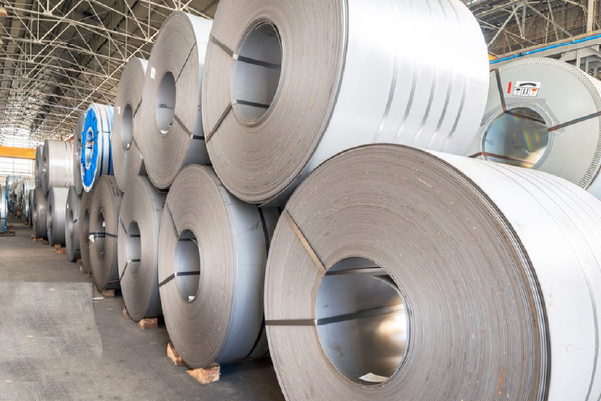
Calculating the true return on investment for an industrial material requires looking far beyond the quote on your desk. The initial cost per kilogram or per sheet is merely the entry fee. The real value is revealed over time, through the lens of performance, longevity, and maintenance. In my role at MFY, I’ve seen countless projects where an initial saving of 20-30% on material cost by choosing aluminum resulted in lifecycle costs that were double or triple those of a stainless steel alternative. The ROI calculation must be holistic, encompassing the full spectrum of expenses and benefits. This includes factoring in the cost of downtime for repairs, the labor involved in maintenance, the replacement cost of failed components, and even the residual value of the material at the end of its life. Stainless steel's primary value proposition in the ROI equation is its "fit and forget" quality in many applications. Its inherent resistance to corrosion, impact, and wear means that once properly installed, it often requires minimal intervention for decades, allowing businesses to focus their resources on operations rather than upkeep.
Initial Cost vs. Total Cost of Ownership (TCO)
The most common mistake in procurement is conflating price with cost. The purchase price of aluminum is generally lower than that of stainless steel for a comparable weight. This can make it very attractive for projects with tight upfront capital constraints. However, this initial saving is often the tip of the iceberg. The Total Cost of Ownership (TCO) provides a more accurate financial model.
Let's break it down using the example of a coastal processing plant.
- Initial Cost: Aluminum piping might cost 25% less than Grade 316 stainless steel piping.
- Installation: Installation costs may be slightly lower for aluminum due to its weight.
- Maintenance & Repair: In a saline, humid environment, the aluminum piping will start to show pitting corrosion within a few years. It will require regular inspections and eventual replacement. The stainless steel 316 piping, specifically chosen for its molybdenum content to resist chloride corrosion, will require only basic cleaning.
- Downtime: Replacing a section of corroded aluminum pipe means shutting down a production line, leading to significant lost revenue. The robust stainless steel system minimizes or eliminates this risk.
- Lifecycle: The aluminum system might have a service life of 10 years, whereas the stainless steel system is designed for 30+ years. This means the entire system would need to be purchased and installed three times over the lifespan of a single steel system.
When all these factors are quantified, the TCO of the "cheaper" aluminum is revealed to be far higher than that of the premium stainless steel.
The Financial Impact of Maintenance and Lifespan
Maintenance is a hidden tax on cheap materials. For architectural applications, an anodized aluminum facade may look pristine upon installation, but it is susceptible to scratching and fading from UV radiation. Restoring the finish can be a costly and complex process. A stainless steel facade, by contrast, possesses a permanent finish. The color and texture are integral to the material itself, not a coating. Maintenance is typically limited to simple washing to remove environmental dirt, drastically reducing long-term labor and material costs.
This longevity directly impacts ROI. Consider two investments. Investment A costs $10,000 and lasts 10 years. Investment B costs $15,000 and lasts 30 years. On a simple annualized basis, Investment A costs $1,000 per year, while Investment B costs only $500 per year. This is the fundamental economic argument for stainless steel in any application intended for long-term service. For our clients in manufacturing, who run their equipment 24/7, durability is synonymous with profitability. Every hour of unplanned downtime for repair is lost production. Choosing a durable material like stainless steel for critical components is a direct investment in operational uptime and, therefore, a higher ROI.
Resale and Recycling Value
The final piece of the ROI puzzle is the end-of-life value of the material. Both aluminum and stainless steel are highly recyclable, which is a significant environmental and economic benefit. They are considered "green" materials because they can be remelted and repurposed indefinitely without loss of quality. This creates a robust scrap market, meaning your initial investment is never entirely lost.
Historically, both metals retain good scrap value. Aluminum's recycling process is particularly efficient, requiring up to 95% less energy than producing primary aluminum from bauxite ore. This often gives it a very high scrap value relative to its primary cost. Stainless steel also has a strong and stable scrap market, driven by the intrinsic value of its alloying elements like nickel and chromium. When a facility is decommissioned or equipment is retired, the ability to recoup a percentage of the initial material cost through scrap sales is a tangible financial return that should be factored into the initial ROI calculation. This "cradle-to-cradle" lifecycle makes both metals responsible choices, but the superior longevity of stainless steel means the decision to recycle comes much later, after decades more of useful service.
| Financial Factor | Stainless Steel | Aluminum | The ROI Winner |
|---|---|---|---|
| Initial Purchase Price | Выше | Нижний | Aluminum |
| Maintenance Costs | Very Low (often just cleaning) | Moderate to High (painting, repair) | Stainless Steel |
| Ожидаемая продолжительность жизни | Very Long (30-100+ years) | Moderate (10-25 years) | Stainless Steel |
| Total Cost of Ownership | Lower over the long term | Higher over the long term | Stainless Steel |
| End-of-Life Value | High (valuable alloys) | High (energy-efficient recycling) | Tie (Both are excellent) |
Stainless steel has lower TCOПравда
Despite higher initial cost, stainless steel's durability and minimal maintenance result in lower total cost of ownership over time.
Aluminum lasts longerЛожь
Stainless steel typically has 2-3 times longer lifespan than aluminum in demanding environments.
Which applications are best suited for stainless steel or aluminum?
Feeling uncertain about which material fits your specific needs? Applying a material in the wrong context can lead to premature failure, safety risks, and wasted investment. The key is to match the unique strengths of the material to the unique demands of the application for a perfect fit.
Stainless steel is the superior choice for applications demanding high strength, durability, hygiene, and corrosion resistance, such as in construction, food processing, and medical devices. Aluminum is best suited for applications where low weight is the most critical factor, like in aerospace, automotive, and portable structures.
This principle of "right tool for the right job" guides every recommendation we make at MFY. You wouldn't use a lightweight aluminum hammer to drive a steel nail, and you wouldn't build an airplane from solid steel. The choice is about aligning properties with purpose. I once consulted with an equipment integrator designing a new line of automated packaging machinery. They were debating between a stainless steel frame and an aluminum one. We walked through the application's demands: the need for a rigid frame to maintain robotic arm precision (favoring steel's stiffness), the requirement for easy wash-down and resistance to corrosive cleaning agents (favoring steel's chemical resistance), and the fact that the machine was stationary, so weight was not a primary concern. The clear conclusion was to use a robust stainless steel frame, reserving aluminum for smaller, non-structural components like guards or mounts where its light weight was an advantage.

The final step in this decision-making process is to synthesize everything we've discussed—properties of aluminum and stainless steel7—and apply it to the real world. The theoretical advantages of a material are meaningless until they are grounded in a practical application. The selection process should be a methodical checklist, weighing the primary requirements of your project against the core competencies of each metal. Is the component subject to high physical stress or impact? Is it exposed to corrosive chemicals or saltwater? Does it need to operate at high temperatures? Is its weight a critical factor for performance or efficiency? Answering these questions honestly will almost always illuminate the correct path. As a supplier, our goal at MFY is not just to sell stainless steel; it's to ensure our clients are using the right grade of steel in the right place, or even advising them when a different material, like aluminum, might be a better fit for a specific, non-critical part of their assembly. This application-centric approach ensures success for our clients and builds the lasting partnerships our business is founded on.
The Domain of Steel: Strength, Hygiene, and Longevity
Stainless steel thrives in environments where toughness is paramount. In the Architecture, Engineering, and Construction (AEC) sector, its high strength and longevity8 make it the gold standard for structural components like rebar (especially in coastal areas), load-bearing supports, and seismic retrofitting. Its corrosion resistance ensures the integrity and appearance of building facades, roofing, and public fixtures for decades, as seen in iconic structures like the Chrysler Building's spire. In the Food, Beverage, and Pharmaceutical industries, stainless steel is the law. Grades like 304 and 316L are non-porous, non-reactive, and can be cleaned to a microbial level, preventing contamination. From processing vats and piping to countertops and tools, its hygienic properties are non-negotiable. Similarly, in the Medical field, the biocompatibility and sterilizability of stainless steel make it essential for surgical instruments, implants, and hospital equipment. ly, in the Energy and Heavy Industry sectors, its ability to withstand extreme temperatures and pressures makes it indispensable for pressure vessels, chemical reactors, pipelines, and power generation components.
The Domain of Aluminum: Lightweight, Conductivity, and Formability
Aluminum's kingdom is defined by its low density. The Аэрокосмическая промышленность industry is the quintessential example; every kilogram saved on an aircraft's frame translates to significant fuel savings or increased payload capacity. High-strength aluminum alloys are the primary material for fuselages, wings, and structural components. In the Автомобили industry, aluminum is increasingly used for body panels, engine blocks, and chassis components to improve fuel efficiency and vehicle handling. This trend is accelerating with the rise of electric vehicles, where reducing weight is critical to extending battery range. In Electronics, aluminum's excellent thermal and electrical conductivity, combined with its light weight and ability to be extruded into complex heat sinks, makes it a core component in computers, LEDs, and power transmission lines. Furthermore, in Consumer Goods, its attractive finish, light weight, and ease of forming make it a popular choice for everything from smartphone bodies and high-end cookware to beverage cans and window frames. In each of these cases, its lightness provides a distinct performance or efficiency advantage that stainless steel cannot match.
Making the Choice: A Practical Framework
How do you make the final call when your application has competing requirements? For example, what if you need both strength and low weight? This is where a weighted decision matrix can be a powerful tool. List your project's critical requirements (e.g., strength, weight, corrosion resistance, cost, lifespan) and assign each a weight based on its importance. Then, score each material against these requirements.
I guided a client through this process for a project involving offshore equipment platforms. Their requirements were:
- Corrosion Resistance (Weight: 30%): Absolutely critical in a marine environment.
- Strength & Durability (Weight: 30%): Must withstand storms and heavy loads.
- Lifespan/TCO (Weight: 20%): A long-term, low-maintenance solution was preferred.
- Low Weight (Weight: 10%): Desirable for transport and installation, but not critical.
- Initial Cost (Weight: 10%): A consideration, but secondary to safety and reliability.
When scored, Duplex stainless steel, despite its higher weight and initial cost, overwhelmingly won due to its top marks in the most heavily weighted categories. Aluminum, while scoring perfectly on weight, failed on the critical requirements of corrosion resistance and absolute strength. This disciplined, data-driven approach removes emotion and bias, leading to the optimal engineering and financial outcome.
| Application Sector | Best Fit: Stainless Steel | Best Fit: Aluminum | Key Reason for Choice |
|---|---|---|---|
| Строительство | Structural Beams, Rebar, Facades | Window Frames, Decorative Trim | Strength & Longevity (SS) vs. Weight & Formability (Al) |
| Transportation | Exhausts, Structural Frames, Springs | Body Panels, Aircraft Fuselages, Rims | Durability & Fatigue Resistance (SS) vs. Weight & Efficiency (Al) |
| Food & Medical | All Processing Equipment, Implants | (Not typically used for contact surfaces) | Hygiene & Sterilizability (SS) |
| Electronics | Enclosures for rugged devices | Heat Sinks, Casings, Power Lines | Durability (SS) vs. Thermal/Electrical Conductivity & Weight (Al) |
Stainless steel excels in corrosive environmentsПравда
Stainless steel's chromium content forms a passive oxide layer that resists corrosion, making it ideal for marine, chemical, and food processing applications.
Aluminum is stronger than stainless steelЛожь
While aluminum alloys can be strong, stainless steel generally offers higher tensile and yield strength, especially in structural applications.
Заключение
Ultimately, the choice between stainless steel and aluminum is a strategic decision, not just a material one. It requires balancing the immediate benefits of aluminum's light weight and lower price against the long-term ROI, superior strength, and unmatched durability offered by stainless steel.
-
Discover the unique self-healing properties of stainless steel ↩
-
Discover why 304L stainless steel is preferred for durability in harsh environments ↩
-
Explore the specific mechanical properties of 304 stainless steel ↩
-
Understand the high-temperature performance benefits of 304 and 316 stainless steels ↩
-
Understand aluminum's advantages in reducing weight and emissions ↩
-
Explore the detailed factors involved in TCO for smarter investment outcomes. ↩
-
Learn how aluminium and stainless steel properties match different applications. ↩
-
Discover the advantages of stainless steel for structures and buildings. ↩
У вас есть вопросы или нужна дополнительная информация?
Свяжитесь с нами, чтобы получить индивидуальную помощь и квалифицированный совет.
